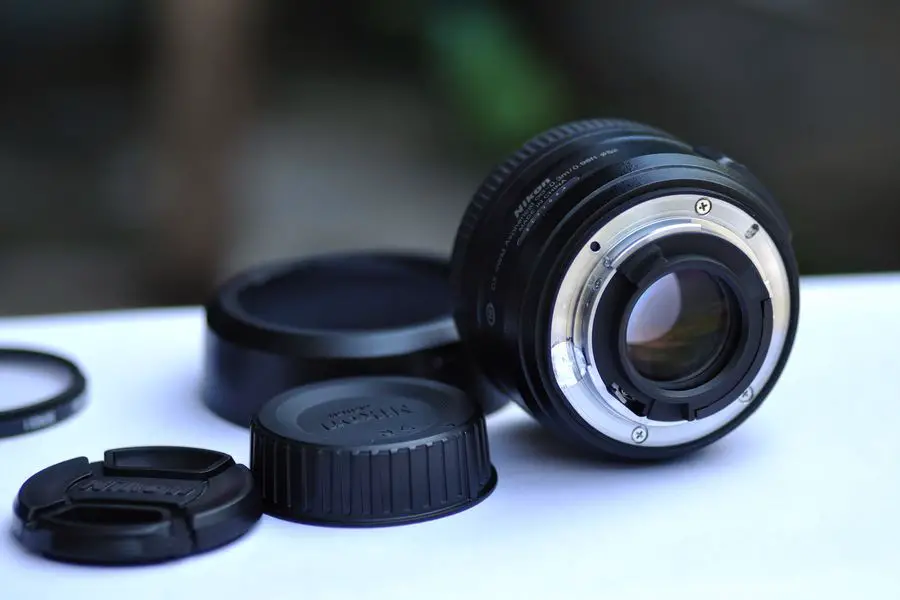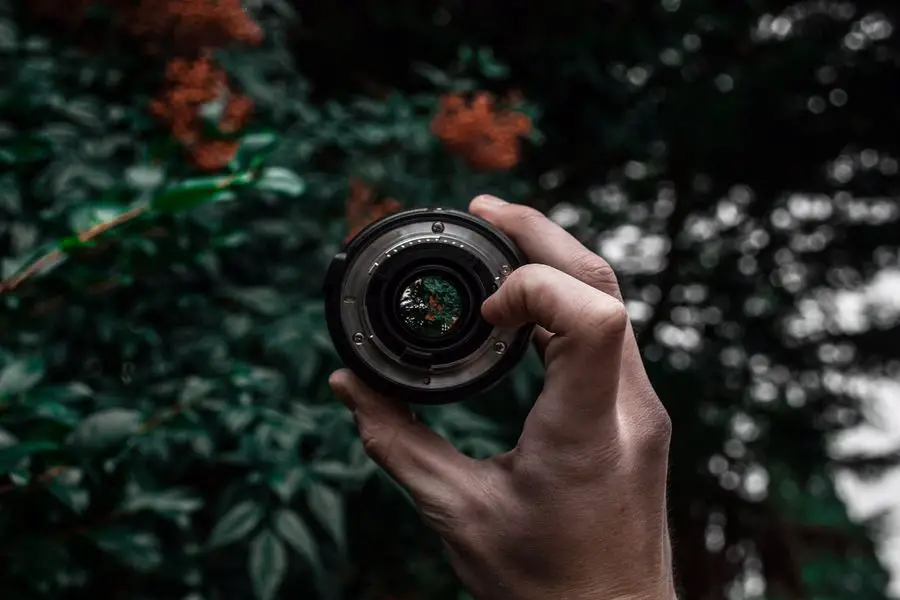As an Amazon Associate we earn from qualifying purchases.
You might have heard that photography is all about composition, taking a picture in focus, or creatively using light. But the lens? What difference does it make? What kind do you use?
What’s the fundamental of choosing the right lens? What are the 6 types of lenses? Let’s find out.
What Are the 6 Types of Lenses?
There are six basic types of lenses available: macro lenses, standard lenses, telephoto lenses, wide-angle lenses, prime lenses, and zoom lenses.

With the advancement in technology, more and more lens types are being developed. Here we will give you a general overview of the six main types of lenses you will come across in photography.
Prime Lens
Prime lenses have a fixed focal length and are great for beginners. They tend to be smaller, lighter, and faster than zoom lenses. It means they have bigger apertures (lower f-stops), allowing more light to enter the camera. The wider the aperture, the less you need to compensate with shutter speed or ISO.
The term “fast” in photography refers to lenses with wide apertures so you can use them in low light or at high shutter speeds.
One of the benefits of prime lenses is that they are very sharp, and this is because there are fewer optical elements in them. It is also easier to create a wider aperture with fewer elements which means depth of field control is easier with a prime lens.
Advantages of Prime Lens
- They tend to be fast — they have a lower f-stop number, which means that they allow more light to pass through the lens.
- Prime lenses are also often more lightweight than zooms, which can help if you carry your camera around all day.
Standard Lens
This lens has a focal length roughly equal to the diagonal measure of the image sensor or film frame. It is usually between 40mm and 58mm (full-frame) or 28mm and 40mm (APS-C) for DSLRs. It provides an angle of view that is close to human vision.
The standard/normal lens is about 50mm. A lens with a 50mm focal length is suitable for most situations, including portraits and landscapes. It offers enough zoom so that you can fill the frame with your subject, yet it also provides plenty of background to give your images context.
This lens is perfect for everyday use and can be used for various purposes, from portraits to landscapes. The best thing about this lens is that it does not distort the object, making it very versatile.
Advantages of Standard Lens
- Standard/regular lenses are great when you want a natural-looking photo that includes a lot of the background.
- They are also great for portraits where you want to draw attention to the subject’s face (and perhaps avoid some of the distortion caused by wide-angle Lens.

Zoom lenses are very adaptable, and by modifying the lens’s zoom, a person may snap a variety of photos with the same camera. Although these lenses are more adaptable than prime lenses, they are bulkier and heavier.
Due to their complicated optical structure, these lenses often have a slower aperture (bigger f-number) than prime lenses. Some zoom lenses have variable aperture over the focal length range, which implies that the maximum aperture decreases as you zoom in.
A zoom lens can alter its focal length. Zoom lenses are very versatile, and by changing the lens’ zoom, a person can take a variety of photos with the same camera. Although these lenses are more versatile than prime lenses, they are bulkier and heavier.
Advantages of Zoom Lens
- You don’t need to change the lens for different shooting distances.
- The zoom range of the zoom lens is more extensive than that of the fixed focus lens, and the weight and volume are smaller than those of the exact equivalent fixed-focus lenses.
Telephoto Lens
Telephoto lenses are a type of zoom lens. This lens is what you’ll find in most photographers’ bags. It’s versatile, and you can use it for just about any situation.
The focal length of a standard telephoto lens ranges from 70mm to 200mm. But you’ll find some lenses with a focal length of 300mm, 400mm, 600mm, and even more than 1,000mm. The larger the number, the more powerful your zoom is (and the higher the price).
You can find telephoto lenses in prime or zoom versions. Primes are non-zoom lenses that offer only one focal length (e.g., 85mm). Zoom lenses give you a range of focal lengths (e.g., 70-200mm or 70-300mm).
Advantages of Telephoto Lens
- It is easier to isolate your subject with telephoto lenses because the background is blurrier, even at smaller f-stops. This way, you can focus on the subject and ignore the background distractions.
- Telephoto lenses also allow you to take photos of people more discreetly. Using a wide-angle lens will make your presence much more noticeable than using a longer focal length instead.
Macro Lens
The macro lens is a specialty lens (sometimes called the close-up lens) that allows you to take extreme close-up photos. A macro lens can also double duty as a standard lens for portraits and landscapes.
They have a magnification ratio of 1:1, meaning they can capture a life-size image. A macro photo of a CD would be the same size as the actual CD. Macro lenses are also helpful for taking images of insects and other small creatures.

The macro lens is ideal for extreme close-ups of small objects like flowers and insects. It works by allowing you to focus much closer to your subject than a regular lens.
Advantages of Macro Lens
- Macro lenses are excellent. They allow you to capture the world in a whole new way and are the perfect companion for your standard lens.
- You can use macro lenses for all sorts of subjects, from landscapes to portraits, but their specialty is macro photography (obviously).
- Macros are pretty easy to use; they operate just like any other lens and simply need to be focused manually.
Wide-Angle Lens
A wide-angle lens gives the photographer the power to create a distorted, exaggerated perspective that’s wider than what the human eye can naturally see. These lenses are usually used when shooting architecture or landscapes because they’re great at capturing vast subjects in their entirety.
These lenses have a focal length of 35mm and below. So they have a wide field of view and can capture a large portion of the scene in front of them. They have a shallow depth of field, meaning that objects close to the lens will be out of focus compared to the subject.
They’re also helpful for shooting interiors or large group shots in tight spaces, such as when you’re photographing your family standing under the Christmas tree and want to fit everyone into the shot.
Advantages of Wide-Angle Lens
- Suitable for shooting interiors or architecture when you can’t move back any further
- It’s great for street photography, especially if you want to shoot environmental portraits.
- Suitable for capturing an entire scene rather than just a tiny section of it
Features to Consider in a Lens
Camera lenses are a lot more complex than they look at first glance. Even the simple kit lens that came with your camera has multiple moving parts, each of which plays a role in the quality and effect of your images.
Aperture
The opening in a lens that contours much light is let through. The wider the aperture, the more light is allowed through and vice versa. Aperture also controls the depth of field in your image, so you can use it to control what is and isn’t in focus.
This lens allows you to control how wide or narrow the opening of the lens is (known as f-stops). It also is internal or external to the lens.
Focal Length
The lens’s focal length controls how much of the scene is captured. A wide-angle lens has a focal length of less than 35mm. The distance between the center of the lens and the point at which light rays collide to form an image.

This distance affects how far in or far out your shot will be magnified. A lens provides a broad field of vision with a short focal length (wide-angle lens). You will have a reduced field of vision if your focal length is lengthy (telephoto lens).
Optical Elements
Lenses are made up of many individual elements designed to correct any distortion. The color fringing or other aberrations occur because of the shape and refractive properties of the glass itself.
The more elements a lens has, the better its quality is likely to be, as it can react to more problems caused by light passing through different types of glass. Typically, lenses with more elements are also heavier and more expensive.
Lens Mount
A standard connection between lenses and cameras. The fitting on a camera body and into which interchangeable lenses are attached. Each manufacturer uses their mount type, and, there.
The lens mount is vital because there are many different mounts for different cameras. If you don’t get the correct type of mount for your camera body, you won’t be able to connect your new lens to your camera body!
Image Circle
The image circle is the area covered by the lens’s projection of an object. If the camera sensor is smaller than the image circle, you will project the entire image circle (and therefore, there will be no vignetting).
However, if the sensor is larger than the image circle, a part of the image circle will be projected onto the sensor. The path traced by rays emanating from object point O, transmitted through each element of an optical system, and forming an image at I.
As seen from above, this circular region has a diameter equal to twice its radius R. An image circle is large enough to pass through all parts of the film or sensor surface without vignetting occurring.
Related Questions
How Are Lenses Classified?
There are many different lenses, but the most basic distinction between them is convex and concave. A convex lens is thicker at its center than at its edges. Light rays passing through a convex lens spread out or diverge. A concave lens is thinner at its center than at its edges. Light rays passing through a concave lens converge, or come together.
What 3 Lenses Should Every Photographer Have?
A photographer’s toolset typically includes three lenses: wide-angle, regular, and zoom. Wide-angle lenses catch more of the scenery. Everyday shooting uses a standard lens. Consider employing a zoom lens to extend your camera’s focus range while photographing a product.
Which Lens Is Most Versatile?
You might want to get your first lens a little bit bigger than you think you need. This is because the middle-sized range — 18-55mm — is perfect for most people and does an excellent job handling most situations.
Conclusion
So there you have it, a brief rundown of the lenses available and their greatest applications. Whether you’re using a zoom or a prime, fixed focal length lenses or variable focal length lenses, understanding about these various kinds of lenses helps ensure that you get the appearance you desire.
